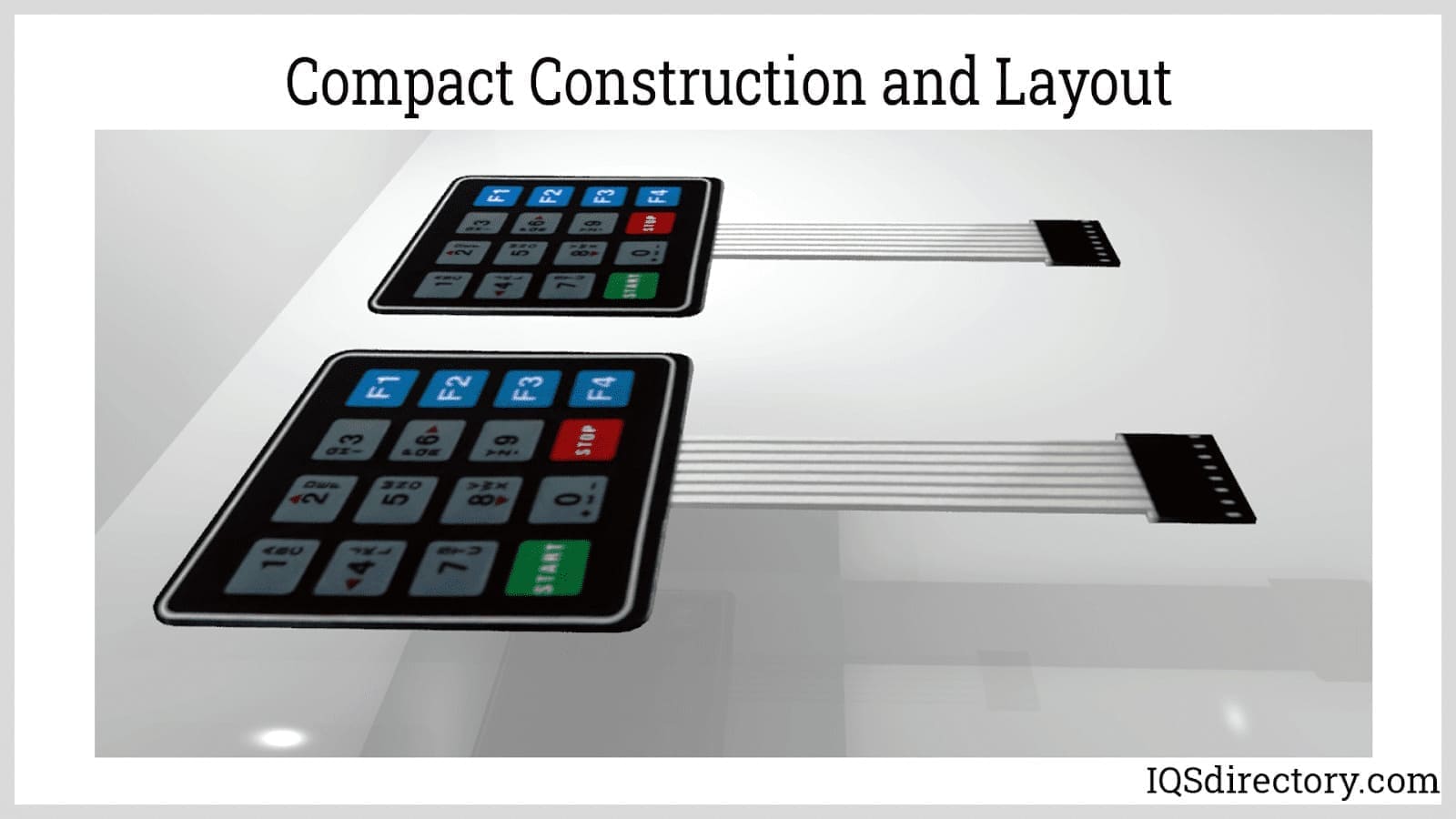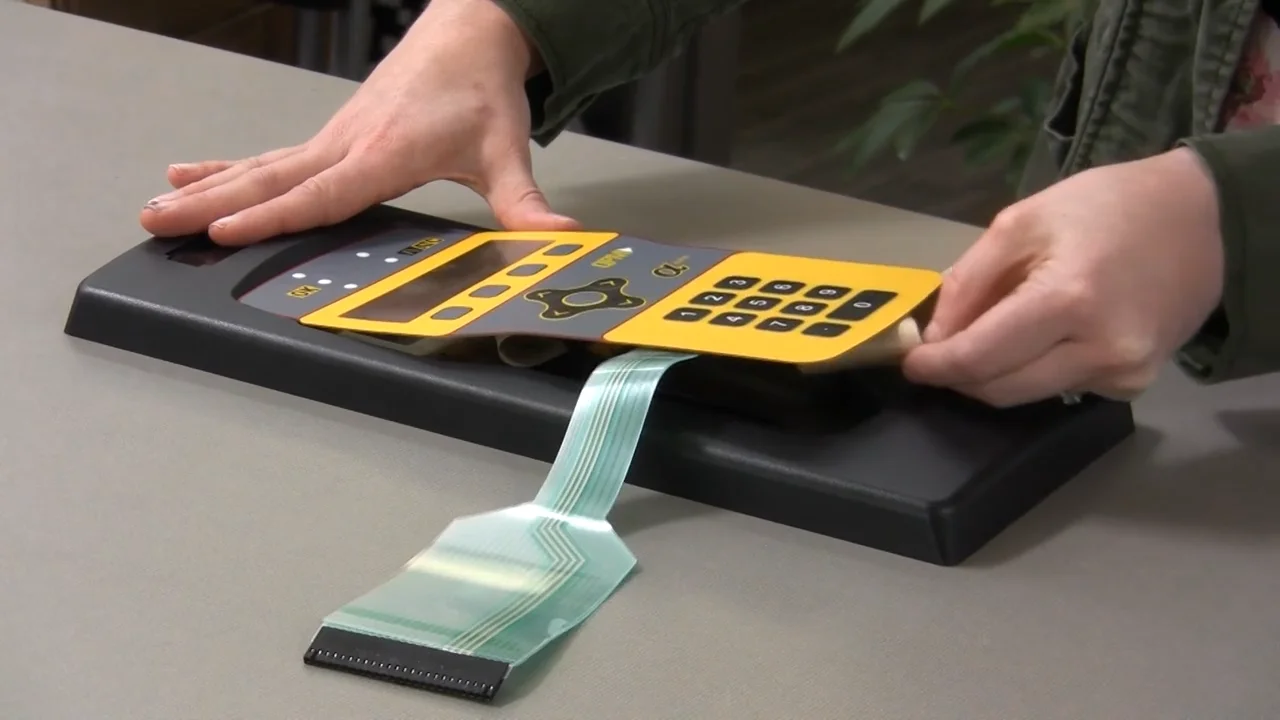Top Advantages of Incorporating a Membrane Switch Into Your Electronic Devices
Top Advantages of Incorporating a Membrane Switch Into Your Electronic Devices
Blog Article
Exactly How Membrane Layer Switches Over Add To the Resilience of Electronic Control Panels
Membrane layer buttons play a critical duty in boosting the resilience of electronic control panels, primarily with their multi-layered building which provides reliable protection against ecological aspects such as wetness and dust. The absence of moving parts significantly lowers the probability of mechanical failures, making membrane switches perfect for demanding applications.
Definition of Membrane Layer Switches

Membrane switches are created to be thin and light-weight, making them appropriate for applications where room is restricted. They can be manufactured in various shapes, dimensions, and shades, offering flexibility in style that satisfies visual and practical requirements. Additionally, membrane layer switches can incorporate numerous innovations, such as tactile comments and LED signs, improving individual experience.
As a result of their building and construction, membrane buttons are frequently resistant to dust, moisture, and general wear, adding to their longevity sought after environments. Their smooth design not only promotes easy cleaning yet additionally decreases the risk of mechanical failure, making them a preferred option for producers looking for reputable individual interfaces in their electronic control board.
Protection Against Environmental Aspects
The design of membrane layer switches over inherently gives a degree of defense against different environmental variables, which is essential for keeping capability in challenging problems - Membrane Switch. These switches are usually constructed with layers of flexible products that protect internal parts from dampness, dust, and impurities. By enveloping the circuitry, membrane layer switches over lessen the risk of brief circuits and rust, which can considerably impair efficiency
Moreover, using durable adhesives and sealants throughout production boosts their resistance to environmental obstacles. Membrane layer switches can sustain exposure to chemicals and solvents, making them suitable for industries such as food handling and healthcare, where health and tidiness are extremely important. Their seamless surface style likewise avoids the buildup of dirt and microorganisms, assisting in easier cleansing and maintenance.
Temperature level changes are an additional environmental concern, and membrane buttons are engineered to operate efficiently throughout a wide variety of temperatures (Membrane Switch). This adaptability makes certain that control panels stay operational in various setups, from commercial settings to customer electronic devices
Effect On User Communication
Customer interaction with electronic control panels is significantly influenced by the style and capability of membrane layer switches. These buttons give a tactile interface that improves the general customer experience, enabling user-friendly navigation and control. Their receptive nature makes sure that customers receive immediate comments upon activation, which is critical for tasks requiring precision and efficiency.
Additionally, the smooth surface area of membrane switches facilitates easy cleaning and maintenance, promoting individual confidence in the reliability of the interface. This cleanliness is specifically important in environments where health here are the findings is vital, such as clinical or food handling setups. Furthermore, the compact and lightweight style of membrane layer changes adds to the aesthetic appeal of control board, urging individual engagement through a modern and smooth look.
In addition, the assimilation of visual aspects, such as published symbols and backlighting, assists users quickly identify features, decreasing the finding out curve related to new tools. Therefore, individuals can operate gadgets better, resulting in increased performance and contentment. In recap, membrane layer switches play a pivotal function in boosting individual interaction by integrating capability, looks, and convenience of usage, ultimately causing enhanced operational efficiency.
Design Adaptability and Personalization
Layout versatility and modification are important facets of membrane switches, making it possible for producers to customize electronic control board to particular applications and customer needs. This versatility permits the combination of different layout components, such as colors, graphics, and appearances, which can enhance the visual allure and user interaction of the control board.
Membrane switches can be personalized in shapes and size, suiting a wide variety of tools and applications, from industrial equipment to customer electronics. This adaptability makes certain that producers can produce instinctive user interfaces that line up with individual expectations and operational demands. In addition, the capacity to incorporate one-of-a-kind attributes such as backlighting or responsive comments better enhances usability, enabling for a much more interactive experience.
In addition, the manufacturing procedure for membrane layer switches supports the rapid prototyping of styles, allowing producers to repeat and fine-tune their principles quickly. This capability not only accelerates the development timeline but also ensures that the final product satisfies specific useful and visual criteria.

Cost-Effectiveness and Durability
Cost-effectiveness and longevity are substantial advantages of membrane layer switches, making them an appealing choice for producers and end-users alike. These switches are typically less pricey to create than standard mechanical buttons, largely as a result of their simplified production processes and the lowered variety of components called for. This expense benefit prolongs not just to initial manufacturing however also to lasting functional expenses, as membrane layer switches usually require less upkeep and have a lower her latest blog failure price.
Additionally, the durability of membrane layer changes adds to their overall worth. Created from resilient products, they are resistant to environmental variables such Source as wetness, dirt, and chemicals, which can cause premature wear in other button kinds. The absence of relocating parts lessens mechanical failure, permitting membrane switches over to maintain capability over prolonged durations.
This toughness is especially beneficial in applications needing consistent efficiency under requiring conditions, such as clinical tools and industrial devices. Inevitably, the mix of cost-effectiveness and durability makes membrane layer switches a financially viable option for suppliers, providing reputable remedies that endure the examination of time while enhancing monetary considerations.
Verdict
Finally, membrane buttons significantly improve the longevity of electronic control panels with their durable building and safety attributes. By effectively shielding circuitry from environmental dangers and decreasing the risk of mechanical failure, these switches ensure consistent performance sought after applications. The seamless style advertises hygiene and ease of upkeep, while customization choices enable tailored solutions for various demands. Generally, membrane switches stand for a reliable and cost-effective choice for improving the longevity and functionality of digital control systems.
Report this page